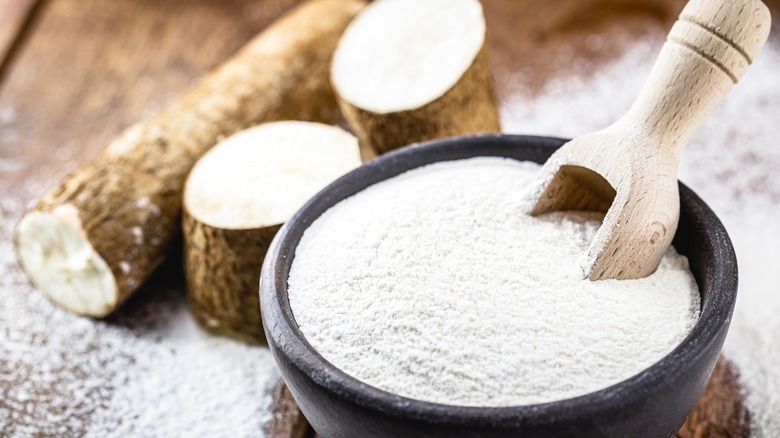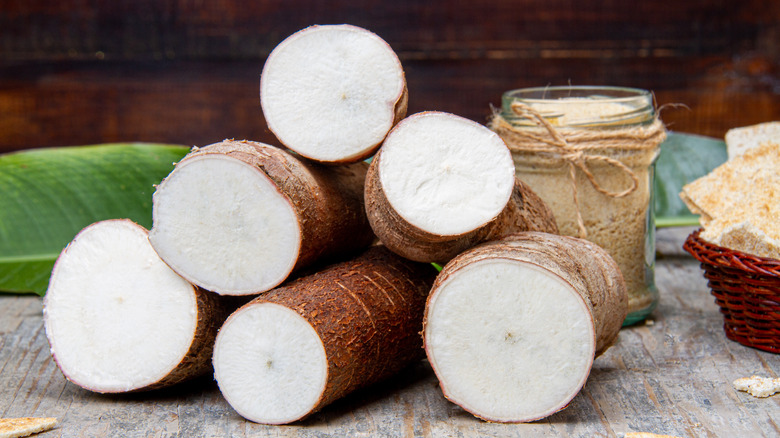Read This Before Cooking With Cassava
Cassava might be best known as a starchy tuber, but unlike most plants, it's actually loaded with carbohydrates and calories and can be very filling. Healthline reports that 3.5 ounces of cooked cassava root yield 190 calories and 40 grams of carbs — roughly the same amount you'd find in a cup of pasta (via Healthline). This root vegetable is commonly grown in tropical climates because of its durability; it can survive harsh conditions in which most plants would not thrive. Cassava is one of the most drought-tolerant crops, which has made it popular in South American and African nations.
Though this vegetable is quite popular around the world, it is far different from most veggies we know and love. Besides the fact that it can grow in almost any condition, it also poses a serious health risk if eaten raw. Those familiar with the process of preparing cassava know that it must be boiled, fried, or baked prior to consumption to ensure that it can be digested safely.
Consuming raw cassava can be fatal
Unlike most vegetables, cassava cannot simply be picked and eaten raw. Rather, it has to be cooked to eliminate the consumer's risk of cyanide poisoning. According to The Spruce Eats, raw cassava contains prussic acid, also known as hydrocyanic acid, which can cause cyanide poisoning if consumed. This danger can be eliminated as long as the cassava root is cooked or pressed.
There are two types of cassava: bitter and sweet. The bitter variety contains more hydrocyanic acid than its sweet counterpart, per Medical News Today, while the sweet version is far more common in the United States. In 2017, improperly pressed and scraped cassava resulted in a cyanide poisoning outbreak that sickened 98 people and killed two others in Uganda, per the CDC. Before you eat cassava, the best way to remove any dangerous acid from the root is by soaking it in water and properly boiling it. Cassava should be peeled and sliced into small pieces, then soaked for up to six days before boiling.

